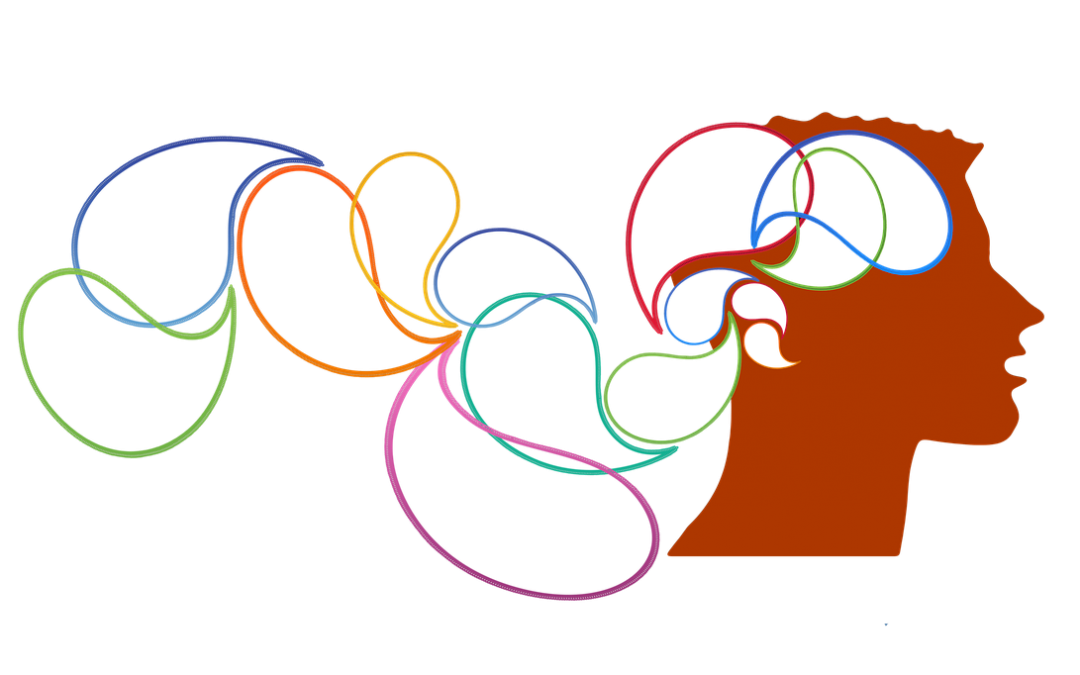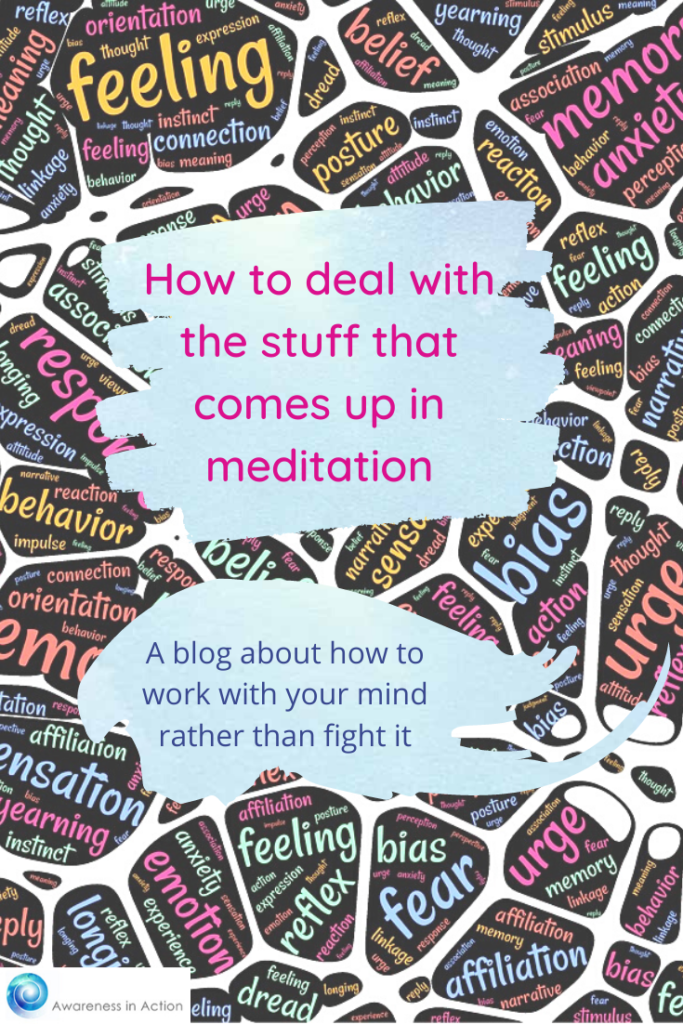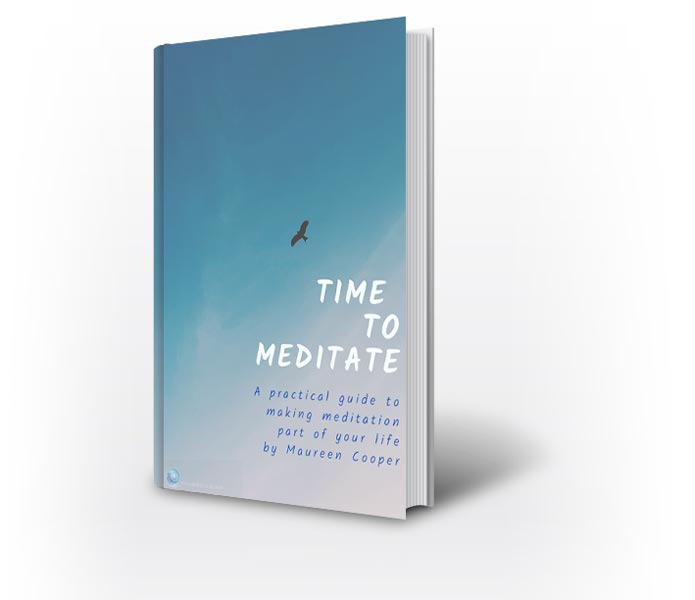
How To Deal With The Stuff That Comes Up In Meditation
Let’s take a look at what some of those might be.
-
Your thoughts are out of control
There is no problem to have thoughts going through your mind during a meditation session. The thing is not to follow after them. Just let them come and fade away. Our habit is when a thought comes, we pay attention to it, and get into it. We follow it through to see where it is going. This is what we are aiming to change in meditation. It’s not about stopping our thoughts but about changing our habit in relation to them.
There is nothing like sitting down to meditate to make you realise how busy your mind is. People often tell me that they are not very good at meditation because they can’t stop their thoughts. First of all, it is a misconception to think that meditation is about stopping thoughts. It is not. It is a way of seeing thoughts for what they are and developing a different relationship with them.
A helpful image is of the sky and the clouds. Our minds are like the sky—spacious, vast, sparkling. Our thoughts and emotions are like clouds—sometimes light and fluffy, sometimes dark and looming. Whichever they are, they don’t stay and moreover, they do not stain the sky. When they pass away the sky is still as spacious and limitless as before.
It is because our minds have this sky-like quality that we notice when we get distracted. The more we notice our thoughts, the better we get at working with them. If we let thoughts come and go without grasping at them, then we can use the thoughts themselves as a way of waking up our awareness.
So, we could imagine sitting on our meditation seat and a thought comes into our mind, Oh I need to buy vegetables. We can just notice the thought—we can even label it ‘thinking’, or ‘thought’ if it helps. Then we place our attention back on the method. That way, each time a thought, or feeling carries our attention away, we use it to strengthen our meditation by bringing our attention back.
2. You get sleepy
It’s very natural to get sleepy. Generally, we are so busy and doing all kinds of things all the time. We actually take so little time to rest and just simply be. In meditation we get to sit and relax, so it is not so surprising that drowsiness sometimes overcomes us.
One thing you can try is to raise your gaze. I always recommend meditating with your eyes open. If you feel sleepy, just look up a little. Keep your gaze soft and not too highly focused.
Just stay with your meditation method and if you fall asleep, just wake up again and continue. The thing is not to get anxious or frustrated about it. Just feel that you had a couple of moments of deep rest. If it continues for several weeks – make sure to do your session in the morning, rather than in the evening when you are more tired.
3. You are bored
This can get us in two ways. Firstly, the fear of being bored can stop us getting to the meditation seat at all. We like to stay entertained and engaged and the thought of sitting quietly by oneself can seem daunting. In fact, there is even research that shows that people will even give themselves electric shocks rather than sit alone in silence. College students were asked to sit for 15 minutes alone in a plain room, with nothing to entertain them. Most people reported feeling uncomfortable and distracted. In a follow up experiment, 67% of the men and 24% of the women opted to give themselves electric shocks.
In meditation we do not have anything outside of ourselves to entertainus, and sometimes this can feel confronting. We might feel some excitement at beginning with meditation, but we quickly become used to the method and then we can feel restless and bored. It’s not unusual to have stretches of memories, and things that worry you come up. Then we notice we are lost in thoughts and remember to come back to the method and try to settle.
The more we do this, the more we do settle. Then we may begin to find our stories slightly boring and not as compelling we previously thought. This is the beginning of the process of coming to know ourselves fully through meditation.
4. You are uncomfortable
People often complain of back pain, knee pain, stiffness and pins and needles. We are not used to sitting still in a particular posture, so it is inevitable that some discomfort will arise. The thing is not to worry about and not to pay it too much attention.
If you feel slightly uncomfortable, then shift your posture slightly. If you feel very uncomfortable, stand up and stretch. Whatever you do to ease your discomfort, do it as part of your meditation—with mindfulness and awareness. Just pay attention to the discomfort lightly without reacting to it and making it into a big deal.
A traditional example
Often meditation teachers compare the early stages of learning to meditate as being like a waterfall. All our thoughts and emotions come crashing in with lots of noise and fuss. If we stay with it, this begins to settle, and the meditation becomes more like a mountain stream—active and bubbly but less chaotic. Eventually our meditation can become like a broad river flowing towards the sea—calm and serene.
This example goes to show that this is all natural, recognisable and simply part of learning to meditate.
What to take forward from all this
Getting used to meditation is so important for us. Most people do not have a habit of sitting still and being with their minds. It’s no wonder that all kinds of stuff come up. We just need to relax—it’s all fine. My meditation teacher always used to say to us that there is no such thing as a bad meditation. It’s all just meditation.

You might be interested in this new zoom+online course which starts on 15 June 2021 HOW DO YOU WANT TO FLOURISH IN YOUR RIPE OLD AGE?
Awareness in Action is dedicated to building a community of people interested in living a life of meaning and purpose based on sustainable wellbeing. If you would like to join with us, you could make a start by sharing and commenting on the ideas you find in the blogs on these pages. Your story is part of our journey.


TIME TO MEDITATE
A 60-page e-book packed full of practical tips and guidance on how to make meditation part of your life
